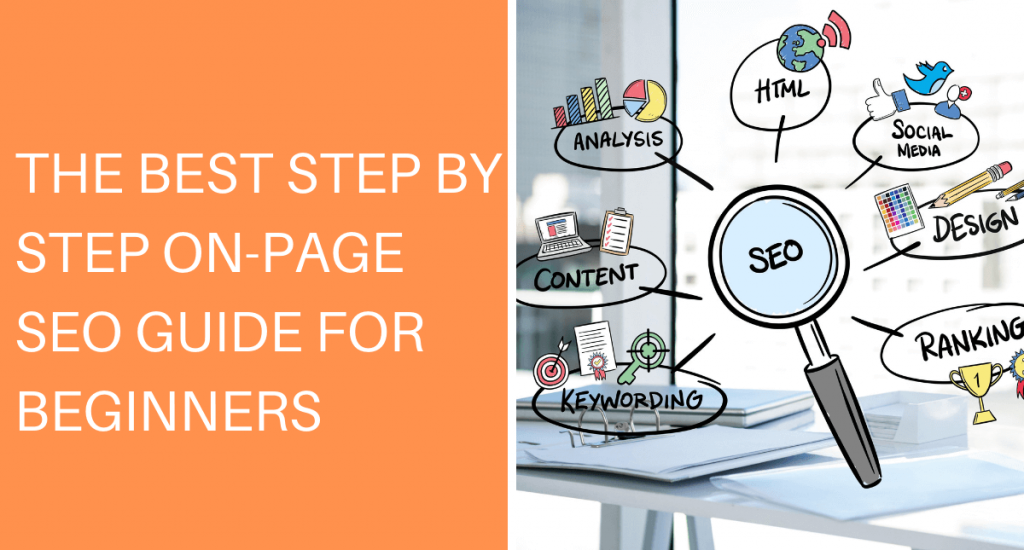Table of Contents
Most people think that off-page SEO is more important than on-page SEO when it comes to SEO. Yes, I do agree that off-page SEO or building backlinks are crucial parts of SEO practices, but on-page SEO is equally important as off-page SEO.
Because If you did an excellent job in off-page SEO but your on-page optimization is not up to the mark, it affects your site’s ranking.
On-page SEO is also known as on-site SEO.
On-page optimization is the SEO practice that helps rank the content higher on search engines.
Search engines follow algorithms to index your content though no one can tell you a specific process and time how and when your content will rank.
Google gives some guidelines to rank a page or site that one can follow.
So here we go.
What is On-page SEO?
On-page SEO is the SEO practice through which we optimize the web page or content for users and search engines. It enhances the user experience as well as search engines. These on-page optimization practices help the web robots, and the targeted users understand the content?
On-page SEO practices are far different from off-page SEO, where you optimize the site that off to your website. In these practices, you build backlinks or social marketing of your site.
On-site SEO practices are keyword-rich content, title meta tag optimization and many.
Google ranks your content that follows the following practices –
- On-page SEO where content is optimized using proper keywords
- Off-page SEO practices include link building, social media sharing
- Technical search engine optimization contains robots.txt file, page speed, structured data, and more
Let’s understand on-page SEO one by one in-depth.
Why on-page SEO is important-
Google is searching for relevant content for its query entered by the user. On-site SEO, we write content with keywords research and optimize it. So a well-optimized site with the keywords and giving their users new content values is helpful to rank the site.

Here you can read google’s ownhow search works?
The keyword-optimized title, meta tag headings play a significant role in on-site optimization.
Google or web robots are brilliant in identifying relevant content for the query. The web robots search for the keywords that enter the search bar on websites and the most relevant results shown to a user. For example, if anyone enters information about a flower, then google shows the result for –
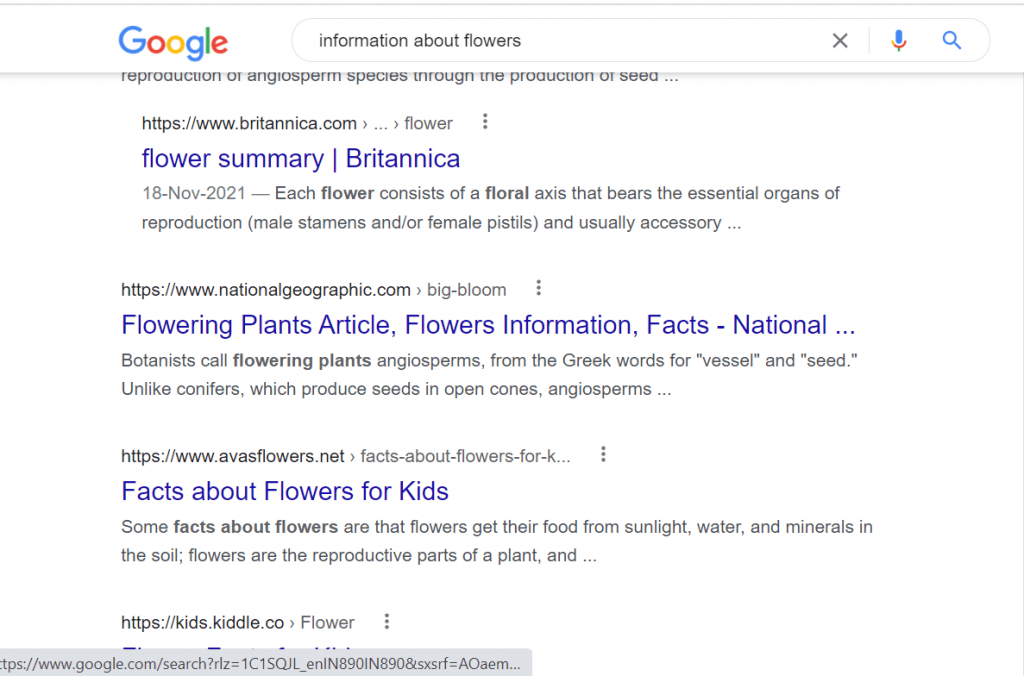
Here It shows results for flowering plants, facts about flowers, flower summary
It means its search for the keywords that enter and shows the exact and relevant results for the keywords. So keywords are a crucial part of on-page optimization.
But it does not mean the content is flooded with keywords and has no value and meaning, and such content is useless.
So now you get an idea of on-site SEO and why it is essential? Now will see what precisely the elements are responsible for best on-page optimization.
On-Page SEO Elements-
Writing blogs is not enough. To rank content on search engines, you need to optimize the site properly.
When it comes to indexing a website higher, the best quality content is essential and optimized.
On-page SEO practices include the following Elements-
High-quality Content –
High-quality content is the heart of all SEO. Web robots search for the best quality content relevant to the query and provide the best values to the readers or customers. So creating the best value given content is the priority, and the content should be keyword-rich.
Keywords used in content should be contextual and engaging to your readers.
Overloaded keywords, the content will not rank against SEO practices.
Keywords-
Keywords are a topic that tells what your content is about?
A simple example of knowing what keywords are is when you type in google’s search bar to search some information, and then while typing a query, you find some words or phrases that appear. Those are keywords, and it shows people searching for that particular keyword, so while writing content, you can get an idea or topic for writing content.
Types of keywords-
- Short tail keywords
- Long-tail keywords
These are the types of keywords used to rank. The keyword itself is a broad topic to understand, and here you can read more about keywords.
Page Titles –
The title is HTML element.
HTML contains tags, and the title is one of them.
It is written <title>On page SEO step by step</title>
A title clears the topic of the content to web robots and users.
IT is <H1> tag, generally the name of your content. The reader can get an idea of what information can he get from the page.
Here are some rules or practices while optimizing a Title
- Generally, the title length should be 70 characters long. Characters include space, alphabet, numerals, symbols or a combination. If the size extends more than seventy characters, your title will get cut off in search results. Mobile results show up to 78 characters long title.
- It is always good to contain keywords, but don’t stuff the title with keywords; otherwise, web crawlers are smart enough to monitor it as spammy content.
- The title should be relevant to the content.
Headers –
These are the body tags of HTML.
The heading tags <H1>,<H2>,<H3> to <H6>
It is written as <H2>Why SEO is important</H2>
Headers tags help organize the content for users and allow the search engine to understand what is more important and relevant to the query.
Headings should contain keywords. H1 and H2 tags use for essential keywords.
Meta tags-
A meta tag or description appears under your title, and it is a short paragraph of description where you put the information regarding your content.
Or you can put the summary of your content here.
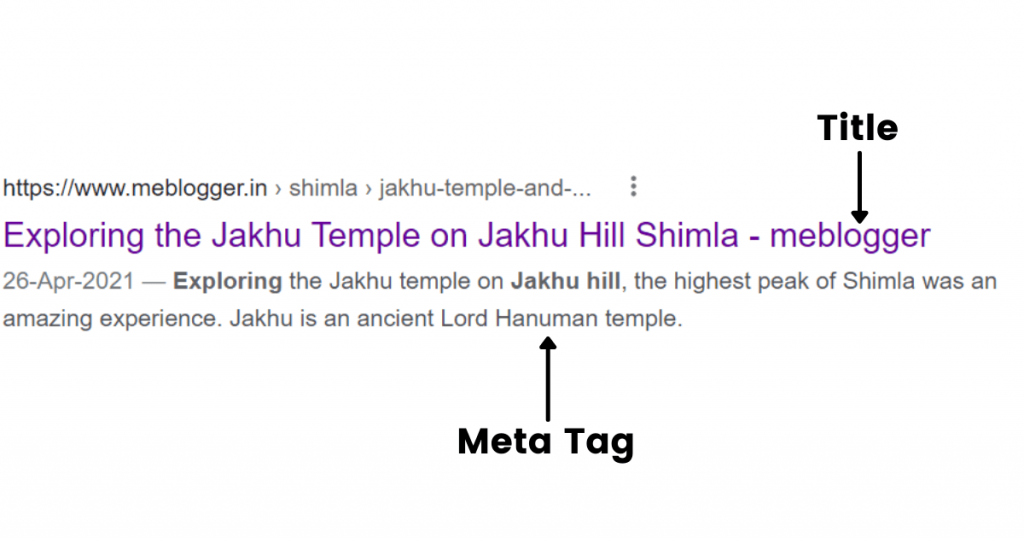
When a user-entered word or phrase is in the search bar, he will get results like the above image where meta description appears under the title, highlighting the most relevant keywords.
How to optimize meta tag?
Here are some practices that make a good meta description
- It should be 160 characters long. A lengthy description will get cut off in search results.
- Avoid the use of numeral signs like +, -, & etc
- Incorporate the keywords or keyword phrase
- Image Alt tag-
Optimizing image is also a vital on-page SEO practice.
An image alt tag used to tell a search engine what your image is about? Google gives search results on image-based.
It means your targeted customer or a reader can reach your site through the image that you put on your content.
But for that matter, you need to optimize your image with alt tags.
- Use keywords in alt tag but avoid keyword stuffing
- Be descriptive and specific but keep it under 125 characters
- An image should be relevant to the topic of content
Structured Data –
Structured data is also known as schema markup.
Structured data or markup help web robots to understand your website elements clearly. As the name, structured data is the way that describes your website or content to make it easier to understand the search engines.
Generally, the schema markup is responsible for featured snippets when searching for something.
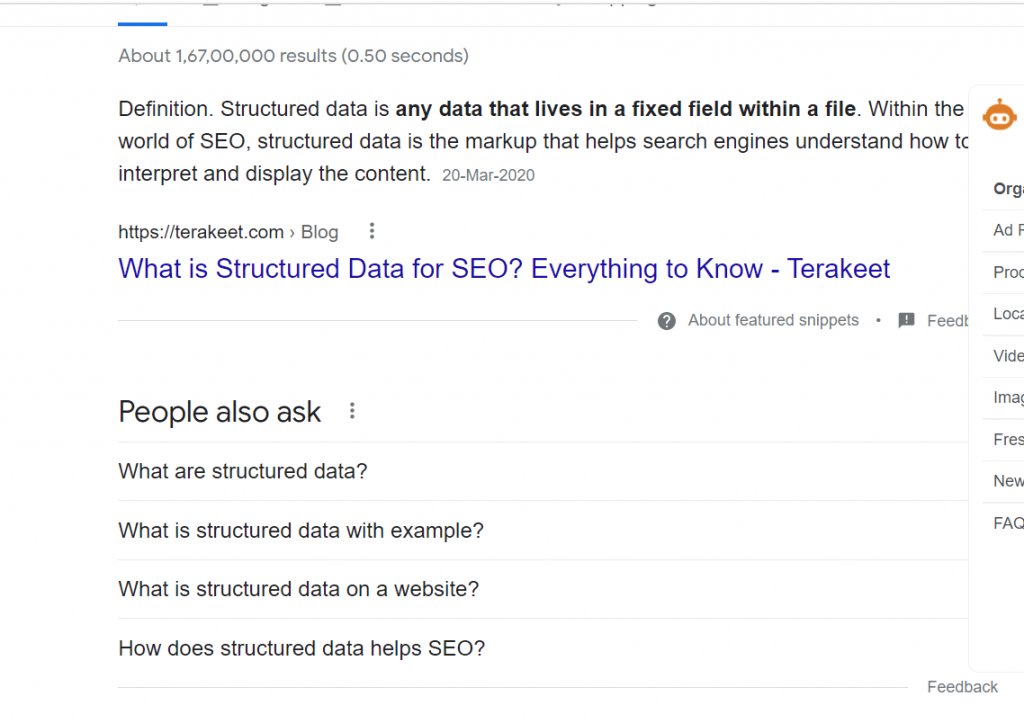
It is one example of structured data markup. Where people also ask is featured snippets.
Page URLs
Page URLs are the permalinks that tell the content or post path.
You should keep the URL simple, short and relevant and include keywords, but don’t make it unnatural.
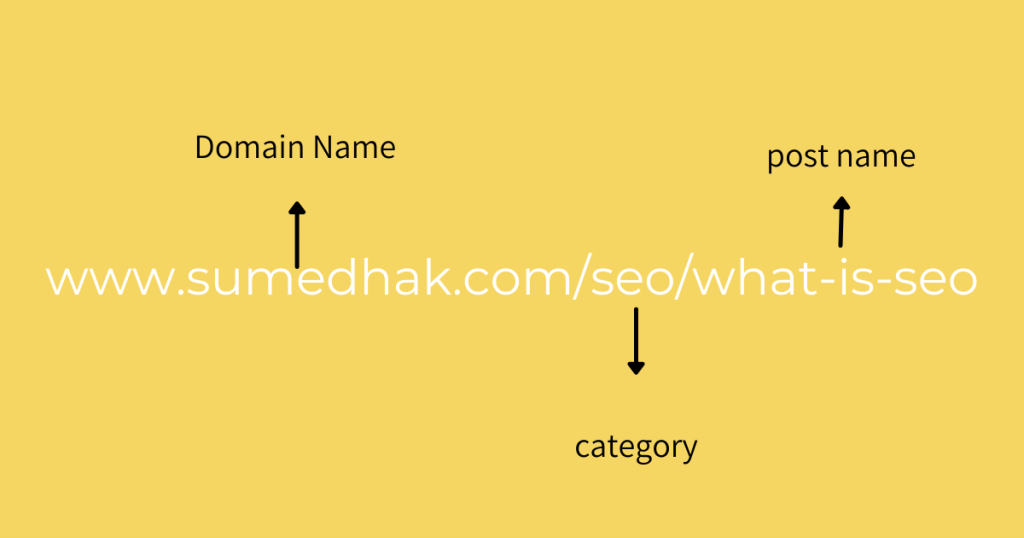
This image is an example of an optimized URL.
The first part is a domain name, then seo is a category that forms to segregate posts related to SEO so a web crawler can crawl your site easily.
And “what-is-seo” is a path of a specific post. From the name, the reader and a crawler can easily understand that the content is about seo? And the URL contains keywords too.
So SEO friendly URLs also play an essential role to rank the site.
How to optimize SEO friendly URLs
There are a few points to keep in mind while optimizing URLs
- Keep URL Short
- Use few keywords don’t over-optimized
- Avoid spaces, numbers, symbols while optimizing URLs
Interlinking
Interlinking or Internal linking is a process of hyperlinking your site’s valuable pages or content. Your site content interconnects to each other.
Interlinking is a vital SEO process because it redirects to your readers on your website, so you keep engaging your reader on your site for more time.
If a reader spends more time on your site, it helps to rank.
While hyperlinking the anchor text also plays an important role, you can read more about anchor text in seo here.
Site Speed –
Site speed is nothing but the time to load a site. Page speed or site speed are important aspects of on-page SEO.
It is crucial to load your site quickly. If your site takes a long time to load, then there are chances that your reader will leave the site. So page speed is essential to stick with the readers.
Use the Google page speed Insight tool or the gtmetrix site to check the site or page speed.
To enhance the speed of your site, keep a few tips in mind.
- Compress Images using online image compressors or plugins. If you use wordpress, it reduces the size of images which is helpful to increase the load speed of your site.
- If you use WordPress for your site platform, you can also use plugins; wp-rocket is one of the best site speed plugins.
Mobile Responsive
Responsive websites play a vital role in ranking.
Today’s world is a smartphone user. So Google is considering the responsive website as a ranking factor.
A responsive website means the site should be navigated and read easily through mobiles.
To check if your site is responsive or not, you can take Google’s mobile-friendly test.
Conclusion
So this is all about on-page SEO.
Search engine optimization is a crucial part that helps to rank sites higher in search engines. On-site SEO is one part of SEO practices done on the page or content. These practices call on-page SEO as it does on-site means whatever changes or techniques you have done with the page, a reader or user can see it.
So on-page optimization is fundamental SEO practice. As high-quality content is a centre of SEO, creating the most valuable content is part of on-page seo.
So understanding and optimizing on-page SEO properly to rank a site is crucial.
I feel it is a tricky part of SEO as you need to think for good keywords, create a post or content using keywords, but it should be natural, and this part is not easy.
So what is your opinion and experiences of on-page SEO practices?
What are the types of SEO?
There are three types of SEO. They are on-page SEO, off-page SEO, and Technical SEO, respectively.
What is blog SEO?
Blog SEO is the practice of optimizing the blog content, HTML code elements, site architecture to rank the content higher in search engines. Blog SEO includes:
On-page optimization.
Off-page optimization site speed.
SEO-friendly URLs.
Internal and external linking.
What are the best on-page SEO practices?
on-page practices are
Keyword research and include these keywords in your content
keyword-rich content by contextual
optimizes title with few keywords
optimized meta tag
keywords-rich headings
use unique title, content, and description
Use SEO friendly URLs
optimized images with alt tags
site speed optimization
keep track of site in Google search console
Interlinking the content
and more
